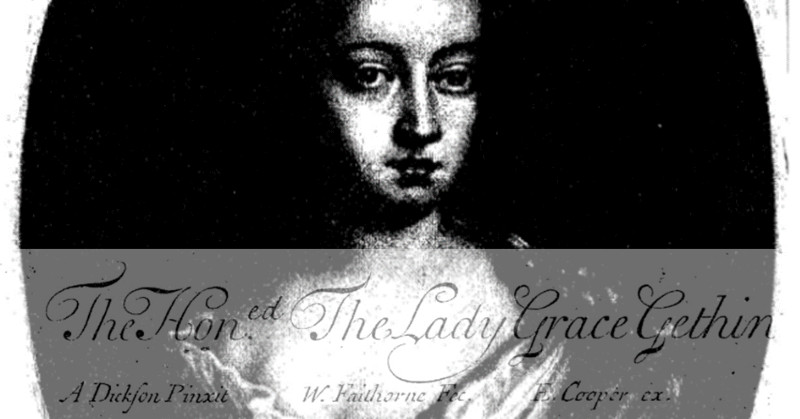│By Ben Wilkinson-Turnbull, Senior Gale Ambassador at the University of Oxford│
The eighteenth century saw an outpouring of writing by women in print. But accessing these important texts, whether it’s for teaching or research, can be difficult. Many survive as unique copies in the rare book collections of institutional libraries, or have not been reprinted since they were originally published. Those that have are often only available in expensive critical editions or affordable anthologies that do not capture the materiality or mise-en-page of the original text. But thanks to Gale’s Eighteenth Century Collections Online (ECCO), many of these texts are now available as digital facsimiles from the comfort of your own desk or classroom.
Researching Women’s Writing Using ECCO
Take for example, the essays of Grace, Lady Gethin (1676-97), pictured in this blog post’s header image. Eighteenth Century Collection’s Online proved vital to me when researching her work for my master’s thesis, which was recently published as an article in a field-leading journal. An important and early female essayist, influenced by the writings of Francis Bacon, Gethin’s text is available only in an expensive facsimile edition that is out of the price range of most students like myself and even the average university library. But thanks to Eighteenth Century Collections Online, accessing her work was quick and easy. I simply typed her name into the search bar and her posthumously published Misery is Vertue’s Whetstone (1703) became available to view, download as a PDF, and scribble all over with annotations. Due to Gale’s in-built Optical Character Recognition (OCR), I could also search inside the volume for key terms I was interested in, helping me to build my analysis of her work – as well as helping my students today navigate the text when I set it on my reading lists!
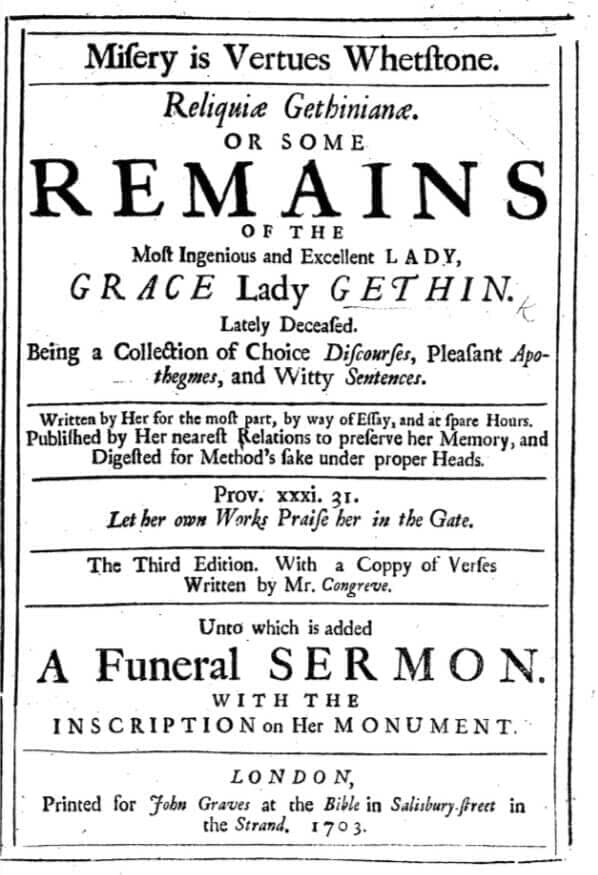
Gethin, Grace, et al. Misery is vertues whetstone. Reliquiæ Gethinianæ. Or some remains of the most ingenious and excellent lady, Grace Lady Gethin. Lately deceased. Being a collection of choice discourses, pleasant, apothegmes, and witty sentences… Printed for John Graves at the Bible in Salisbury-street in the Strand, 1703. https://link.gale.com/apps/doc/CB0127499799/ECCO?u=oxford&sid=bookmark-ECCO&xid=a1502812&pg=3
Comparing Editions
As a book historian interested in how the materiality of women’s texts can affect their meaning, the functionality of this resource – to view results from both Early English Books Online as well as Eighteenth Century Collections Online – made a huge difference to the research process. Like other important women writers of the period such as Aphra Behn, I found that Gethin’s work initially appeared in the late seventeenth century and was reissued in the early eighteenth. This led me to wonder whether there were any differences between these versions of her work. As I was able to view the 1703 reissue in ECCO alongside those of 1699 and 1700 from EBBO, I was able to trace how the prefatory material had changed over the years. This revealed how her editors had enlisted the services of the popular playwright William Congreve to write a supportive poem to help sell later copies of the text, and demonstrated to me how Eighteenth Century Collections Online could play a vital role in producing publishable research to develop my profile within the academic community.
Teaching Women’s Writing: Gender and Race
In addition to helping me conduct high-quality research, ECCO is my go-to resource for teaching eighteenth-century women’s writing. Teaching from digital facsimiles of their work helps students understand how readers would have experienced these texts. It can also be used to emphasise the gendered difficulties and differences at play in literature of the period.
A good example of this is getting students to look at the frontispiece portraits of the poet Alexander Pope and literary all-rounder Eliza Haywood. The latter embarked on a successful career as the author of amatory fiction, an achievement which she celebrated in the 1720s by having the leading artist George Vertue engrave her portrait to appear as a frontispiece to her books. Pope, the leading satirist of the age and translator of Homer, was furious that a woman writing popular fiction dared to employ the same artist to depict her. Pope vented his frustration in his vicious description of Haywood in his mock-epic poem The Dunciad (1728):
See in the circle next Eliza placed, Two babes of love close clinging to her waist; Fair as before her works she stands confess’d, In flowers and pearls by bounteous Kirkall dress’d. The Goddess then: ‘Who best can send on high The salient spout, far-streaming to the sky, His be yon Juno of majestic size, With cow-like udders, and with ox-like eyes.
Despite Haywood’s commercial success, Pope rejected her as a serious literary figure and reduced her to grotesque cow feeding her illegitimate children from her giant udders. Unpleasant and deeply misogynistic, examples like this from ECCO help students to understand the difficulties women faced in the period when publishing through the very public medium of print.
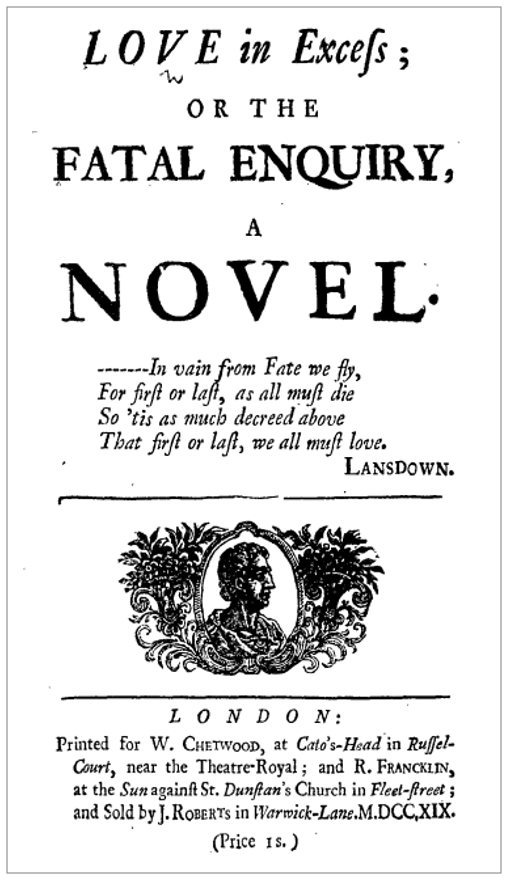
Haywood, Eliza Fowler. Love in excess; or the fatal enquiry, a novel. Printed for W. Chetwood, at Cato’s-Head in Russel-Court, near the Theatre-Royal; and R. Francklin, at the Sun against St. Dunstan’s Church in Fleet-Street; and sold by J. Roberts in Warwick-Lane, M.DCC.XIX. [1719]. https://link.gale.com/apps/doc/CW0111942655/ECCO?u=oxford&sid=bookmark-ECCO&xid=6091df72&pg=2
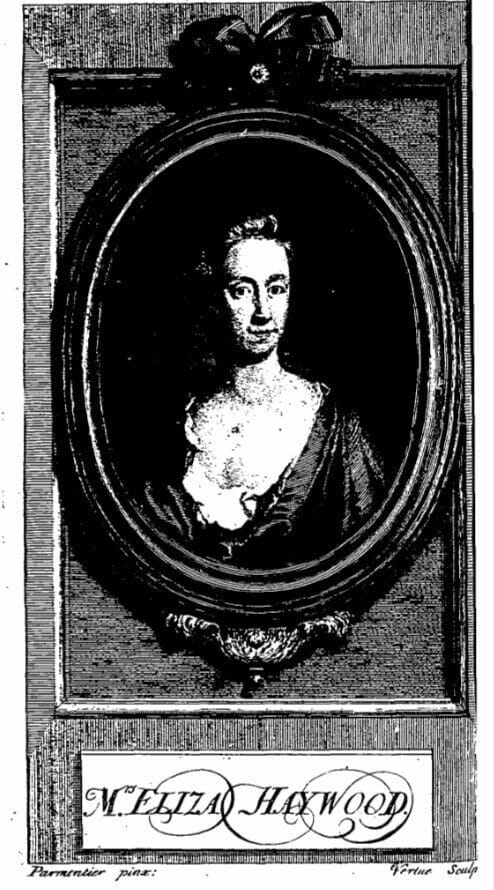
Haywood, Eliza Fowler. Secret histories, novels and poems. In four volumes. Written by Mrs. Eliza Haywood. 2nd ed., vol. 1, printed [partly by Samuel Aris] for Dan. Browne, jun. at the Black Swan without Temple-Bar; and S. Chapman, at the Angel in Pall-Mall, M.DCC.XXV. [1725] https://link.gale.com/apps/doc/CW0109132585/ECCO?u=oxford&sid=bookmark-ECCO&xid=80ea6b5a&pg=3
Understanding Tensions Between Race, Slavery, and Women’s Writing
Eighteenth Century Collections Online also helps when you’re teaching students about the tensions between race, slavery, and women’s writing. Comparing poetry by abolitionists, such as the labouring class writer Anne Yearsley’s A Poem on the Inhumanity of the Slave Trade (1788) and wealthy moralist Hannah More’s Slavery (1788), provide a starting point from which students can begin considering how white women across class boundaries actively engaged in the ongoing debates surrounding slavery.
The resource also enables students to compare these texts with that of the first woman of colour to publish poetry in English, Phillis Wheatley Peters. Her ground-breaking Poems on Various Subjects, Religious and Moral (1773) is a wide-ranging collection of verse covering everything from slavery to imagination. Her work is widely available in cheap critical editions. But viewing the volume in its original format, replete with an engraved author portrait that emphasises Wheatley Peter’s enslaved status, is essential for students. As well as helping them to understand how women writers of colour were represented in print, it is an important source that demonstrates the additional difficulties they faced when entering the print marketplace.
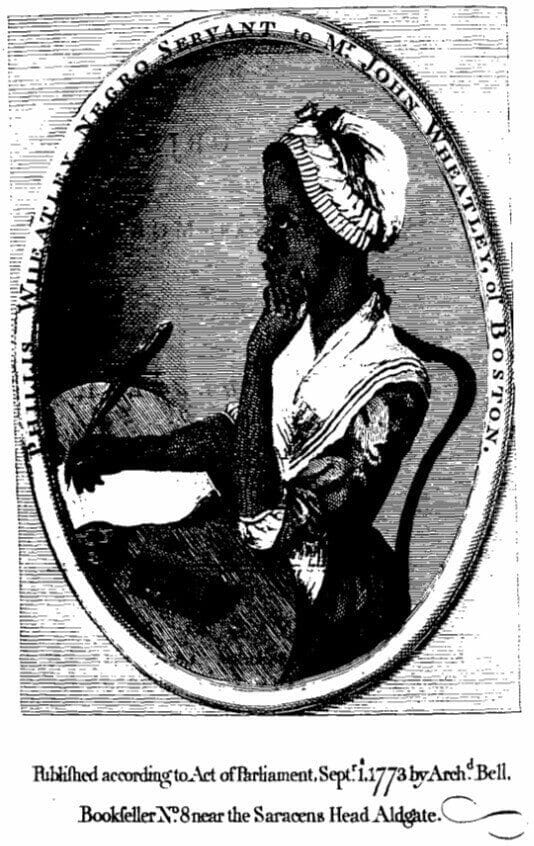
Wheatley, Phillis. Poems on various subjects, religious and moral. By Phillis Wheatley, negro servant to Mr. John Wheatley, of Boston, in New England. Printed for A. Bell, Bookseller, Aldgate; and sold by Messrs. Cox and Berry, King-Street, Boston, MDCCLXXIII. [1773]. https://link.gale.com/apps/doc/CW0111593426/ECCO?u=oxford&sid=bookmark-ECCO&xid=8e92a451&pg=1
In a society where we are still fighting for women’s rights and racial equality, researching and teaching women writers from different backgrounds and historical periods remains crucial. Eighteenth Century Collections Online allows us to promote the study of these authors to the scholarly community. But it also helps to teach our students that women have, and always will, play an important role in society and the literary canon.
If you enjoyed reading about women writers, or using Eighteenth Century Collections Online for both teaching and research, check out:
- Teaching with Eighteenth Century Collections Online
- Finding black female authors in Women’s Studies Archive
- Ice cream recipes in Gale’s Eighteenth Century Collections Online
- The Author Gender Limiter tool in Women’s Studies Archive
- Announcing a new partnership between Gale and the British Society of Eighteenth-Century Studies
- Using Gale Digital Scholar Lab in the classroom
- Using ECCO in an undergraduate dissertation on Vauxhall Pleasure Gardens in the eighteenth century
Blog post cover image citation: A design made using the following primary source – Gethin, Grace, et al. Misery is vertues whetstone. Reliquiæ Gethinianæ. Or some remains of the most ingenious and excellent lady, Grace Lady Gethin. Lately deceased. Being a collection of choice discourses, pleasant, apothegmes, and witty sentences… Printed for John Graves at the Bible in Salisbury-street in the Strand, 1703. https://link.gale.com/apps/doc/CB0127499799/ECCO?u=oxford&sid=bookmark-ECCO&xid=a1502812&pg=3

